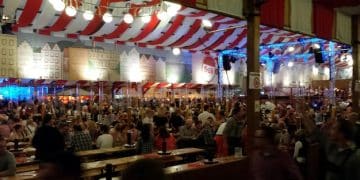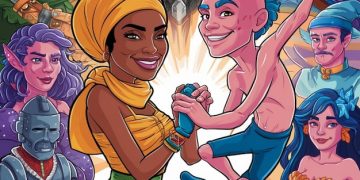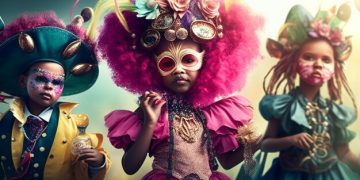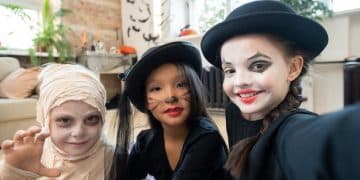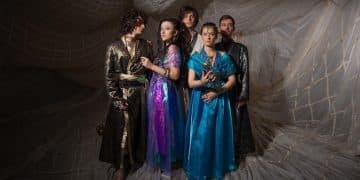Cosplay: Express Yourself in the Geek Lifestyle
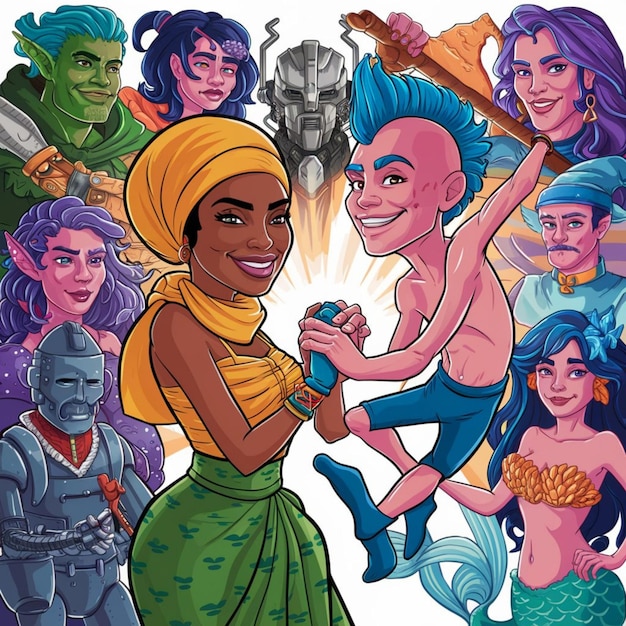
Cosplay, a portmanteau of “costume play,” is a performance art where participants wear costumes and accessories to represent a specific character, often from anime, manga, comic books, video games, or movies, allowing for creative self-expression within geek culture.
Dive into the vibrant world of cosplay, where creativity meets craftsmanship and passion takes center stage. Cosplay is more than just dressing up; it’s an art form, a community, and a powerful means of self-expression.
What is Cosplay? Unveiling the Basics
Cosplay, short for costume play, is a performance art where individuals dress up as characters from various fictional sources. It’s a celebration of fandom and a way to bring beloved characters to life.
But what exactly does it entail? Let’s break down the core elements of this engaging hobby.
The Essence of Cosplay
At its heart, cosplay is about transformation and representation. It involves not only creating or acquiring costumes but also embodying the character’s personality and mannerisms.
Beyond the Costume
While the costume is a key component, cosplay extends beyond mere attire. It often involves crafting props, styling wigs, applying makeup, and even learning signature poses and catchphrases.

The level of dedication and skill involved can range from simple, store-bought costumes to elaborate, handcrafted creations.
Cosplay isn’t just a hobby; it’s a creative outlet that allows people to express their love for characters and stories in a tangible and performative way.
Cosplay offers a creative, engaging way for fans to connect with their favorite characters and stories, fostering a strong sense of community and celebration.
The History of Cosplay: From Sci-Fi Fandom to Global Phenomenon
Cosplay, as we know it today, has a fascinating history rooted in science fiction fandom. Understanding its evolution provides valuable context for appreciating its current form.
From humble beginnings to a global phenomenon, the story of cosplay is one of passion, innovation, and community.
Early Roots in Science Fiction
The earliest documented instances of cosplay can be traced back to science fiction conventions in the United States during the late 1930s and early 1940s. Fans would create costumes based on characters from their favorite books and movies.
The Impact of Japanese Anime and Manga
The popularity of anime and manga in Japan during the 1970s and 1980s played a pivotal role in shaping modern cosplay. Fans began creating increasingly elaborate costumes based on these characters.
- Comic Market: The iconic Comiket in Japan provided a major platform for cosplayers to showcase their creations.
- Global Expansion: Anime conventions around the world began to incorporate cosplay contests and events.
- Internet Influence: The internet helped to connect cosplayers globally, fostering collaboration and inspiration.
The evolution of cosplay highlights how fandom, technological advancements, and cultural exchange have all contributed to its current status as a beloved global activity.
Cosplay Materials and Techniques: A DIY Guide
Creating a successful cosplay often involves a diverse range of materials and techniques. Whether you’re a beginner or an experienced cosplayer, understanding these basics is essential.
From fabric selection to prop construction, mastering these skills will empower you to bring your dream characters to life.
Essential Fabrics for Cosplay
Choosing the right fabric is crucial for achieving the desired look and feel. Popular choices include:
- Cotton: Versatile and affordable, ideal for basic garments.
- Polyester: Durable and wrinkle-resistant, great for complex designs.
- Spandex: Stretchy and form-fitting, suited for superhero costumes.
- Leather/Vinyl: Adds a realistic touch to armor and accessories.
Prop Construction Techniques
Props often require more specialized materials and techniques. Common approaches include:
Craft foam is an incredibly adaptable medium that allows for the creation of intricate details while remaining lightweight and easy to shape.
- EVA Foam: Lightweight and easy to shape, perfect for armor and weapons.
- 3D Printing: Ideal for complex and highly detailed parts.
- Worbla: A thermoplastic that can be molded and reshaped with heat.
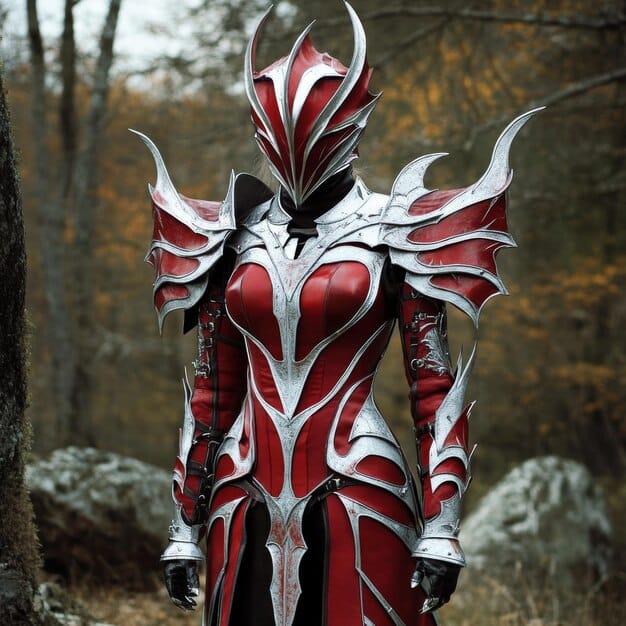
By mastering a combination of sewing, crafting, and prop-making techniques, cosplayers can create truly impressive and authentic costumes.
Understanding and experimenting with different materials and techniques are essential for crafting high-quality, visually striking cosplays.
The Cosplay Community: Conventions, Competitions, and Online Spaces
The cosplay community is a vibrant and supportive network of individuals who share a passion for costume play. This community thrives both online and at various events.
Discover how cosplayers connect, collaborate, and celebrate their shared interests in this dynamic social landscape.
Conventions and Events
Conventions provide a central hub for cosplayers to showcase their costumes, meet fellow enthusiasts, and participate in various activities.
Competitions and Contests
Cosplay competitions are a popular feature at conventions, offering cosplayers the chance to display their craftsmanship and performance skills.
From local contests to international championships, these events can be highly competitive and rewarding.
Online platforms serve as vital spaces for cosplayers to connect, share their work, and seek inspiration.
The cosplay community offers a diverse range of opportunities for individuals to connect, compete, and collaborate, fostering a sense of belonging and shared passion.
Cosplay Ethics and Etiquette: Respect and Responsibility
Like any community, cosplay has its own set of ethical guidelines and etiquette rules. Adhering to these principles ensures a positive and respectful environment for everyone involved.
Understanding and practicing these standards is essential for maintaining the integrity and inclusivity of the cosplay community.
Consent and Boundaries
Respecting personal boundaries is paramount in cosplay. Always ask for permission before taking photos or touching someone’s costume.
Avoiding Appropriation
Be mindful of cultural appropriation when choosing characters and costumes. Research the origins of the character and avoid perpetuating harmful stereotypes.
Supporting Inclusivity
Cosplay should be welcoming and inclusive to individuals of all backgrounds, body types, and skill levels. Discrimination of any kind is unacceptable.
By practicing respect, inclusivity, and responsible behavior, cosplayers can help create a positive and welcoming environment for everyone in the community.
Cosplay as Self-Expression: Finding Identity Through Characters
Cosplay is more than just dressing up; it’s a powerful form of self-expression. It allows individuals to explore different facets of their personality and connect with characters on a deeper level.
Discover how cosplay can serve as a transformative journey of self-discovery and personal empowerment.
Embracing Different Personas
Cosplaying allows individuals to step outside of their everyday identities and embody the traits and characteristics of their chosen characters.
Building Confidence and Self-Esteem
Creating and wearing a cosplay can be a significant confidence booster. It allows individuals to showcase their creativity and receive positive feedback from others.
Connecting with Personal Values
Many cosplayers choose characters who resonate with their personal values and beliefs. By embodying these characters, they can express their own convictions and ideals.
Cosplay fosters creativity, confidence, and connection, proving that dressing up can be a profound act of self-expression and personal empowerment.
| Key Concept | Brief Description |
|---|---|
| 🎭 What is Cosplay? | Dressing up as characters, embodying personality, and crafting props. |
| 🌍 Community | Connect, collaborate, and celebrate shared interests at events and online. |
| ✨ Self-Expression | Finding identity through characters, boosting confidence. |
| 🤝 Ethics | Respect boundaries, avoid cultural appropriation, and support inclusivity. |
Frequently Asked Questions About Cosplay
What is the difference between cosplay and Halloween costumes?
▼
Cosplay aims to accurately represent a character, whereas Halloween costumes are often more generic or loosely inspired by a theme. Cosplay involves more detailed craftsmanship and dedication.
What are some good resources for finding cosplay patterns and tutorials?
▼
Websites like Etsy, Simplicity, and YouTube offer a wide range of cosplay patterns and tutorials. Check out cosplay forums and communities for further recommendations.
How can I improve my cosplay craftsmanship skills?
▼
Practice is key! Start with simpler projects and gradually increase the difficulty. Watch tutorials, attend workshops, and seek feedback from experienced cosplayers.
What is the best way to transport a delicate or bulky cosplay to a convention?
▼
Use sturdy garment bags or containers to protect delicate parts. For larger props, consider disassembling them for transport and reassembling them at the convention.
How can I find local cosplay communities and events in my area?
▼
Search online for cosplay groups, meetups, and conventions in your region. Social media platforms like Facebook and Instagram are also great resources for finding local events.
Conclusion
Cosplay is a deeply engaging hobby that combines artistry, community, performance, and personal expression. Whether you’re drawn to the intricate craftsmanship, the camaraderie of conventions, or the chance to embody your favorite characters, the world of cosplay has something to offer everyone. Embrace your creativity, respect the community, and let your passion guide you as you embark on your own cosplay journey.
Read more content
